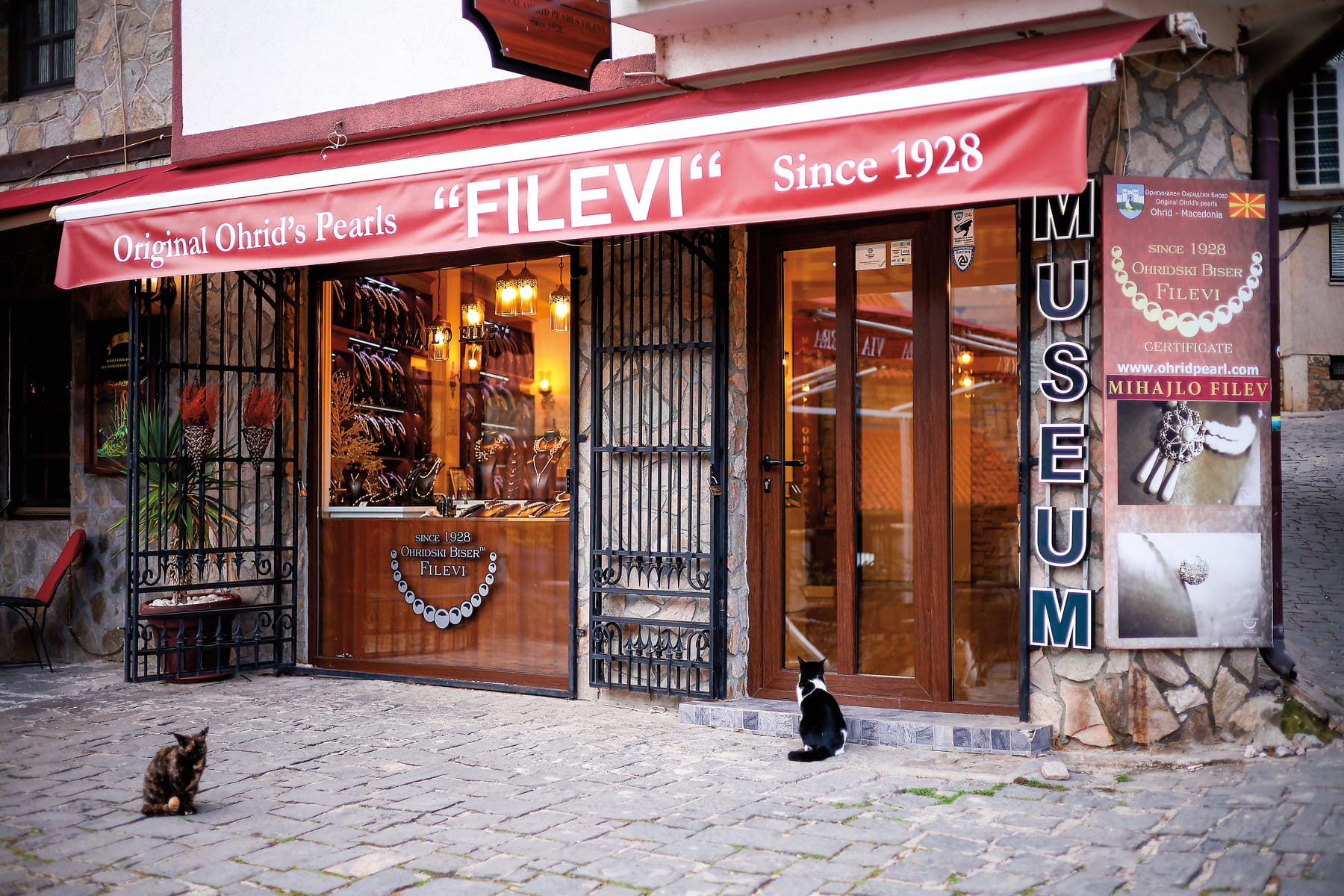
Family Secret: The Mystery of North Macedonia’s Ohrid Pearls
Artisans are preserving the elusive technique behind these pearls—handmade from a fish, not an oyster—in a town of Slavic, Byzantine and Ottomon influences.
The Old Town of Ohrid—on the banks of a lake of the same name—is home to a gemstone filled with intrigue and mystery that has made North Macedonia famous beyond these shores.
With its cobblestone streets, Byzantine churches, Ottoman mosques and houses, this touristy town is filled with bookstores and souvenir shops, art galleries and jewelry stores. One such jewelry store, Ohrid Pearls Filevi, has been widely known for almost a century. What stands out are the portraits of various European royalty hanging behind the counter: Queen Elizabeth II, Princess Diana, Princess Catherine (of Wales) and Queen Margrethe II of Denmark—all wearing Ohrid pearls.
For these are no ordinary pearls. They are not formed inside oysters or mussels but rather handcrafted using a special emulsion formed from the scales of the Plasica—a small, silvery fish with a slender body. It is one of hundreds of endemic species in Ohrid, regarded as one of the world's most diverse lakes. And yet only two families, the Filevs and the Talevs, are the sole protectors of the pearl-making secret.
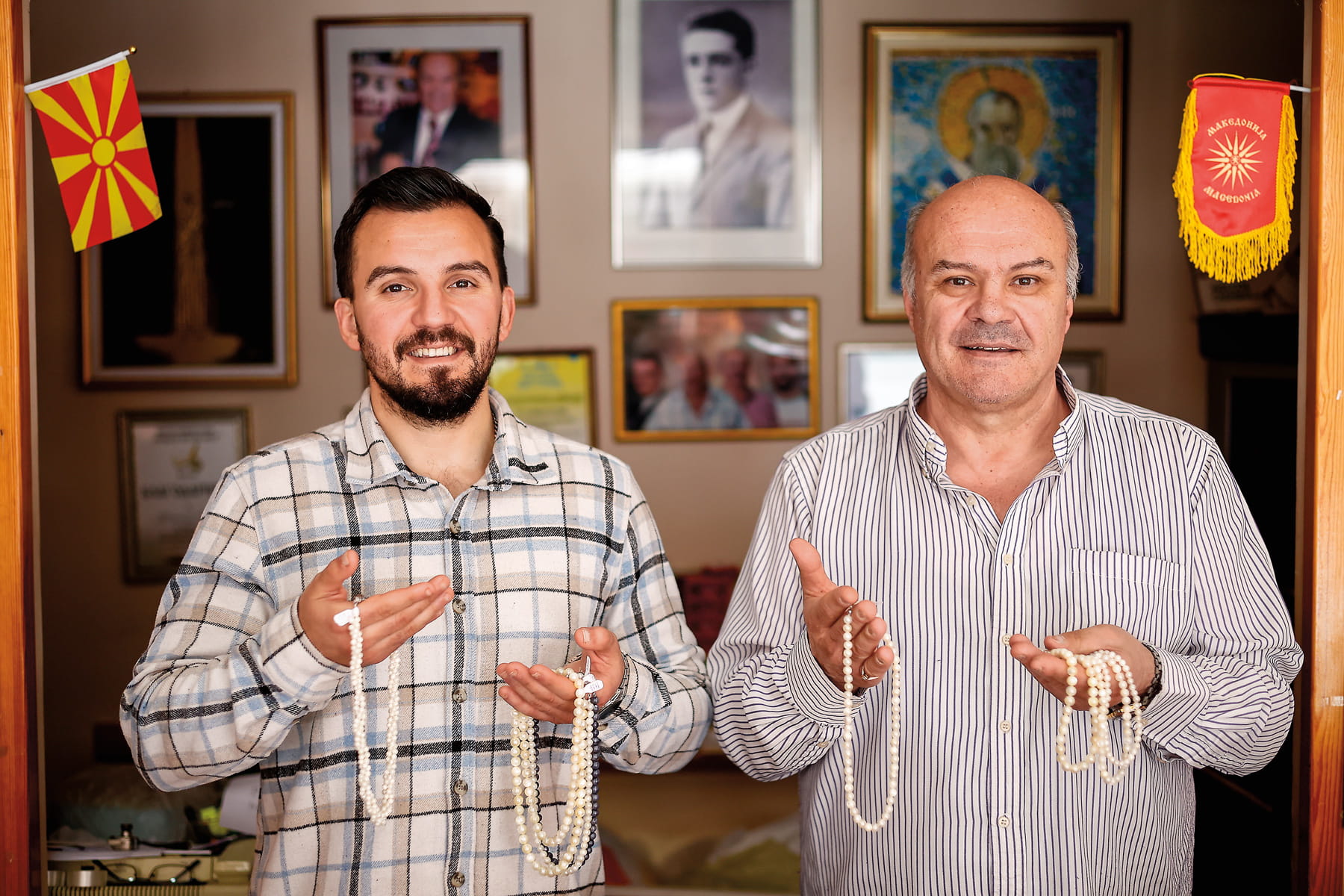
Vane Talev, right, shows off his family's wares with his son Kliment Talev in their Old Town showroom. The Talev and Filev families are the sole keepers of authentic Ohrid pearlmaking.
Ohrids' pearls represent a symbiosis between lake and town, the latter nurturing the wealth of the former to produce an artifact that has earned global fame. While the formula has remained within the two families for over a century, the pearls' fate depends not only on the future inheritors of the secret but their ability to remain a genuinely crafted item in the face of mounting global demand. If they rely on a secret only two families possess and authentic production is handcrafted, how can Ohrid pearls keep pace with accelerating demand from tourists and jewelry lovers around the globe? Are they in danger of becoming a victim of their own success?
Ohrid is no stranger to external forces, as reflected in its historical and ethnic diversity. It is regarded by UNESCO, which inscribed the Lake Ohrid region as a World Heritage Site in 1979, as one of the oldest human settlements in Europe. Slavic, Byzantine and Ottoman influences are visible in its architectural, religious and cultural heritage. While a majority of the population are Macedonian Slavs, roughly 20 percent are Muslim, according to local estimates, mainly composed of Albanians and Turks, reflecting the country's broader composition.
As a local writer of thrillers, Jordan Kocevski, says, Ohrid is "the oldest town in the world with continuous life," beneath which "there are layers and layers of history—wherever you dig, you'll find something." Each layer has left its mark, including on the town's demographics.
Every generation has added something new. We had difficult situations, but we didn't lose our culture.
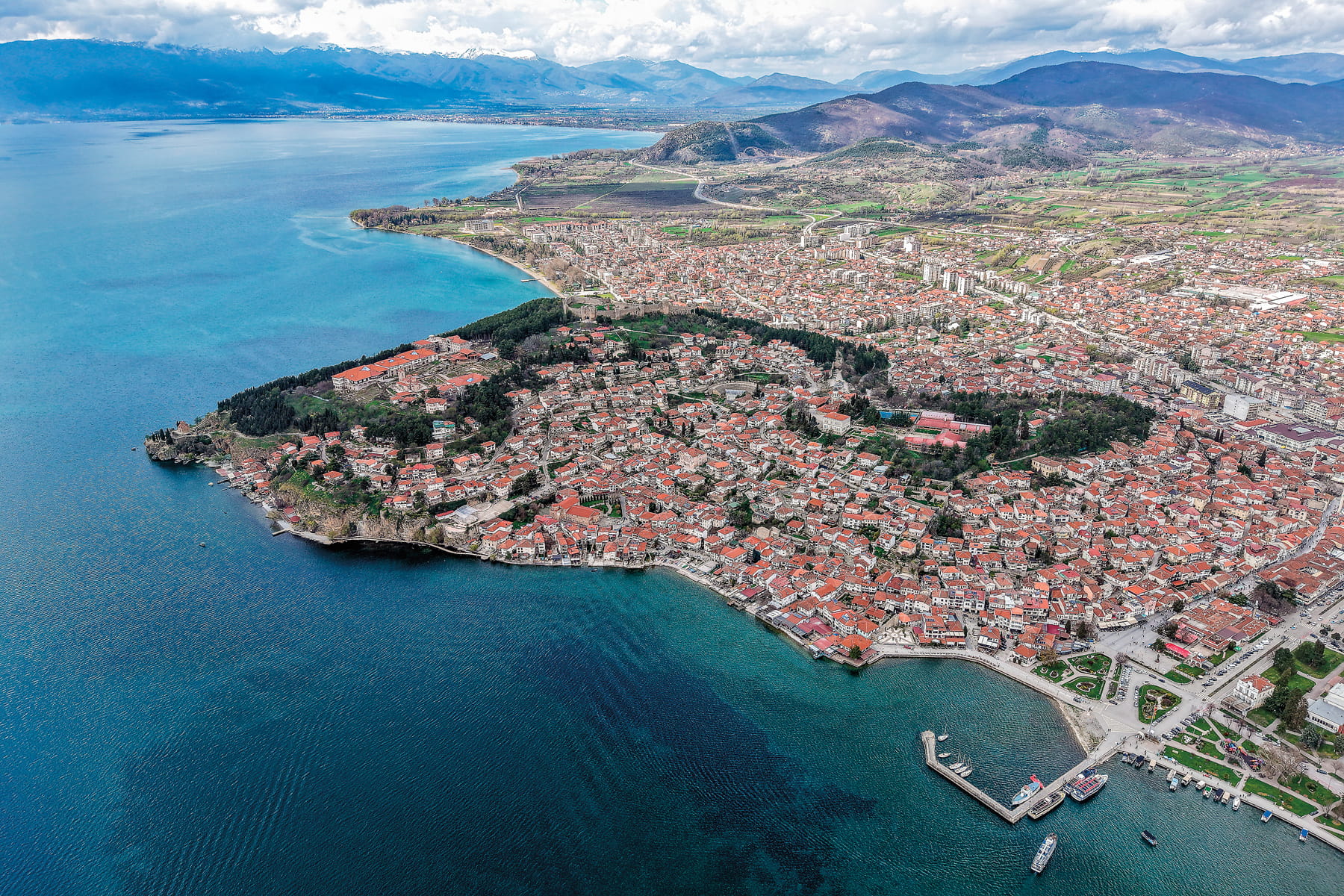
Lake Ohrid, which straddles the border of North Macedonia and Albania, is named for the town of Ohrid. It is the source of the fish from which the famous freshwater pearls are made.
With its scenic lake and historical town, more and more tourists flock to Ohrid every year. "The old town surprises everyone," Kocevski says. The constant presence of those serene waters continues to inspire musicians, artists and poets.
From a vantage point where Byzantine monks, Saints Cyril and Methodius, taught the first Slavic alphabet, Kocevski describes the serenity and spirituality that tourists want to carry with them when they leave.
For many, the influence of the lake is deeply personal. In 2014 in Ohrid, jewelry maker Marta Pejoska, who uses both Ohrid pearls and mother of pearl, opened Macedonia's first gallery for contemporary jewelry and filigree, the intricate working of metal threads into delicate tracery. "This is jewelry that confronts people with the sustainability of the lake," Pejoska explains. The lake's stocks of Plasica are essential for the Ohrid pearl. There is no substitute.
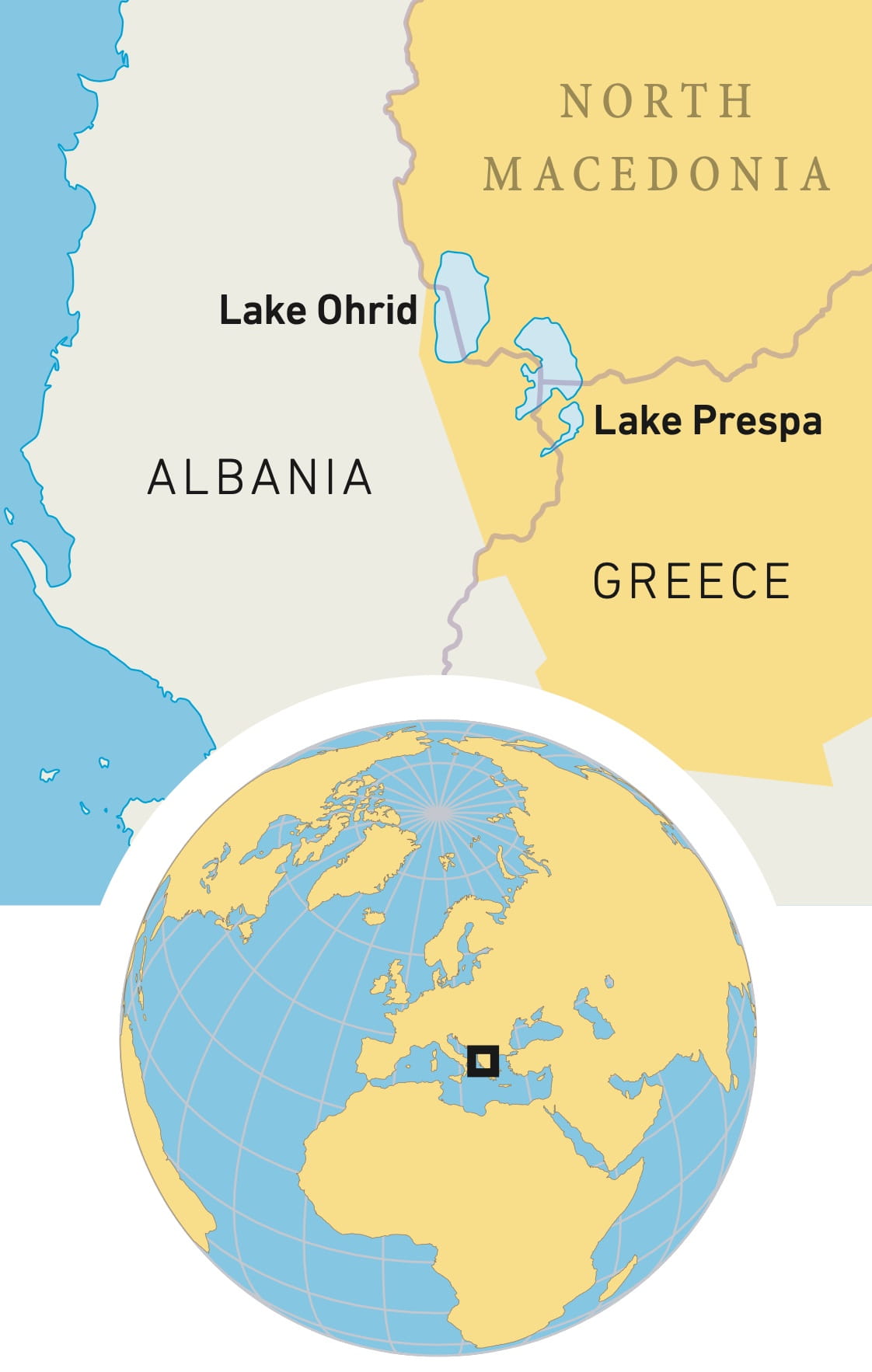
Origin of Ohrid pearls
Ohrid pearls are handmade using scales of Plasica fish. The exact quantity required, however, is a closely guarded secret possessed by only two families, the Talevs and Filevs. They offer competing versions of how it came to be told in the first place. According to local narratives, a Russian emigree of potentially Balkan roots, Jovan Subanovic, arrived in Ohrid more than 100 years ago. He was supposedly drawn by the similarities of the area to Siberia's Lake Baikal, having served as a bodyguard for the Romanovs, the last dynasty to rule Russia, before the 1917 Revolution.
For Pavel Filev, an Ohrid native and one of the pearlmakers, it was his father who made Subanovie's acquaintance in their family's traditional restaurant. Filev says the secret of the pearl passed in the disarming atmosphere of typical Balkan hospitality. "My father learned the complete craft," Filev says with pride, his grandfather having been slower to realize its potential value. Vows of confidentiality were made.

Left: The scales of the Plasica fish are used to make an emulsion essential to the closely guarded technique for making Ohrid pearls. Right: Street art celebrates the Plasica.
For the Talev family, who own a shop a short walk away, it was a transactional acquisition of knowledge. "My grandfather paid 25 Napoleons for the secret in 1924," Vane Talev, the latest generation of pearlmakers, says, "and Jovan promised he would never give the secret of making the emulsion to anyone else." He says his grandfather worked with diamonds and was ready to embrace a new and, in their eyes, secret production process. It has proved a shrewd investment.
While the two families dispute who learned about the pearls first, they agree that nothing in the process has changed in a century and that the craft is passed on within the families.
But both families remain reticent about describing or demonstrating the process. Talev reluctantly depicts some of it. A ground shell, literally "a single grain," forms the base. "The emulsion is stored in a small medicine jar," he says, lifting his fingers to demonstrate its size. "Then we apply layer after layer," holding up emerging pearls on either end of a toothpick. Get the formula wrong, and the pearls will lose their shine when confronted with perspiration.
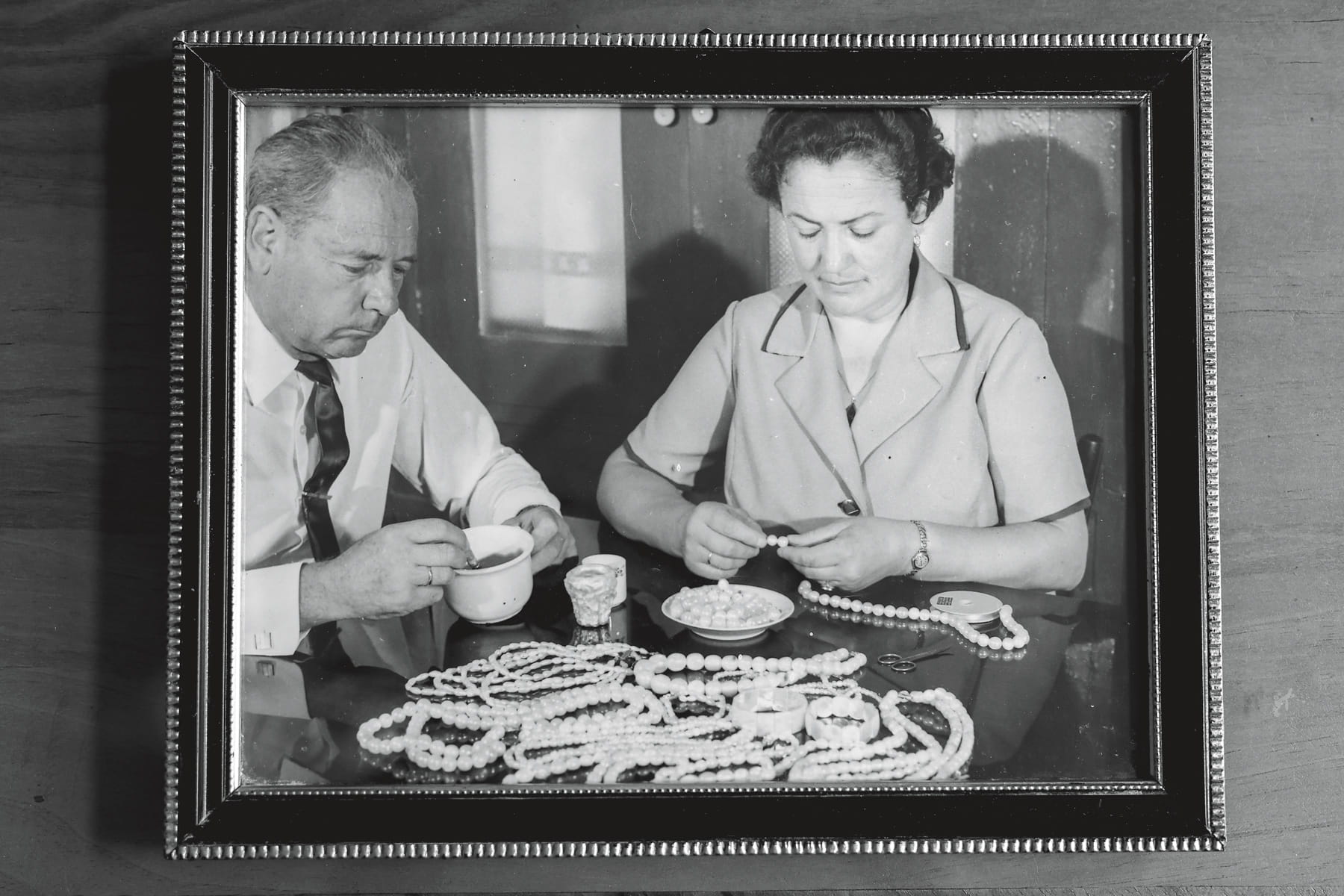
The Filev family has made necklaces and other jewelry from Ohrid pearls for generations.
What is the future of pearl making?
For Talev and Filev, their legacy is enshrined in family. "Every generation has added something new," Filev contends. "We had difficult situations, but we didn't lose our culture."
It is a pride that Talev also basks in. "We were sitting at a family lunch one Sunday, and my son said he wanted to learn the zanat [craft]," Talev recalls. "At that moment I could have flown," such was his happiness.
The following week, he took his son to work. "We only know our zanat," not the methods of mass production, Talev insists. "Big money in a small time—it doesn't interest me."
The mushrooming of shops proffering authentic Ohrid pearls aims to cater to tourists' wish for a meaningful souvenir. "We physically make eight 5mm necklaces in a day," Talev says, looking over his shoulder at his son, "Four each—maybe five or six at most—everything is handmade."
Talev says the pearlmaking season runs from the end of October to early April each year, giving them a limited period. What they produce in this time frame is what they have to sell; there is no additional supply. "Our father still helps—he is 83 years old."
As they struggle to keep up with demand, there is a need to distribute the limited number of pearls to more people through new artistic expressions, where a single Ohrid pearl adds the finishing touch.

Left: Pavel Filev says not only his son, Dimitrija (not pictured), but his daughter, Marija, will carry on the family business. Right: Ohrid pearls are admired for their luster, unique craftsmanship and cultural significance.
"Jewelry culture has been largely shaped by traditional filigree, an ancient craft passed down through generations," Pejoska explains. Though Ohrid was very well known for its filigree masters, the tradition was dying. "It was often dismissed as outdated, and many filigree masters had no successors," she says.
Pejoska and her gallery have inspired a new wave of contemporary filigree jewelry culture. "I was part of the ones who were paving the path for the others whilst shaping the Macedonian contemporary jewelry scene." Filigree was "a reconnection with my cultural roots, my heritage and an awakening of my purpose," she adds, "while revitalizing the old, the new emerged." Other filigree shops have opened, offering the Ohrid pearl novel ways of demonstrating its beauty.
Without this shift, the pearlmakers face a fundamental dilemma. Ohrid pearls are a handicraft held in the head and ultimately the heart. It is forged not only through training or practice but through deliberations around the family dining table, delimiting who can ultimately produce authentic Ohrid pearls. The pearls' innate value has persisted because of their preservation of the secret, now over a century old. Without a broader sharing of the secret, the number of Ohrid pearls will remain limited.
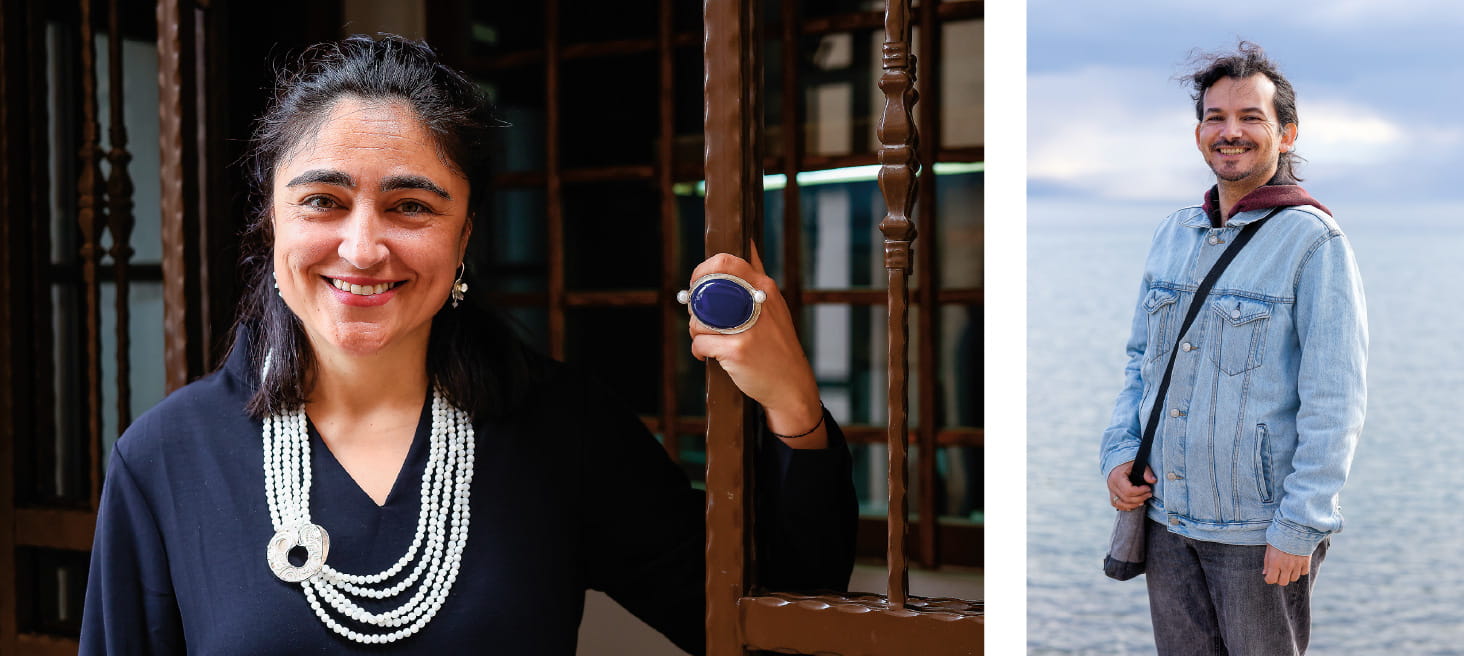
Left: Jewelry maker Marta Pejoska wears an Ohrid pearl necklace in front of her gallery. Right: Local writer Jordan Kocevski takes pride in the serene waters of Lake Ohrid.
[Filigree was] a reconnection with my cultural roots, my heritage and an awakening of my purpose.
Both families are concerned about those intent on profiting from the new wave of tourists, who are sold pearls that aren't faithful to the Ohrid tradition, including the import of fakes that have no connection to Ohrid and its lake. "We received an award for our handmade work," says Talev, pointing to a certificate of origin from an agency in Brussels. Yet the nature of the process means that both families are limited in how many pearls they can produce annually.
The family names carry respect and value that guarantee a transfer of knowledge and tradition that can be traced back to the very first Ohrid pearl to Subanovic and the time he spent with fishermen on Lake Ohrid.
For such family affairs, future generations are at the forefront, the secret passed from one to the next, though almost exclusively to the male family members. There is a clear delineation as to who will be the harbinger of the future. Talev's three sons stand ready to assume the reins.
The Filev family has taken a different course. He says his daughter, Marija, will inherit the practice along with his son, Dimitrija. "The process is closed within the family circle," he says.
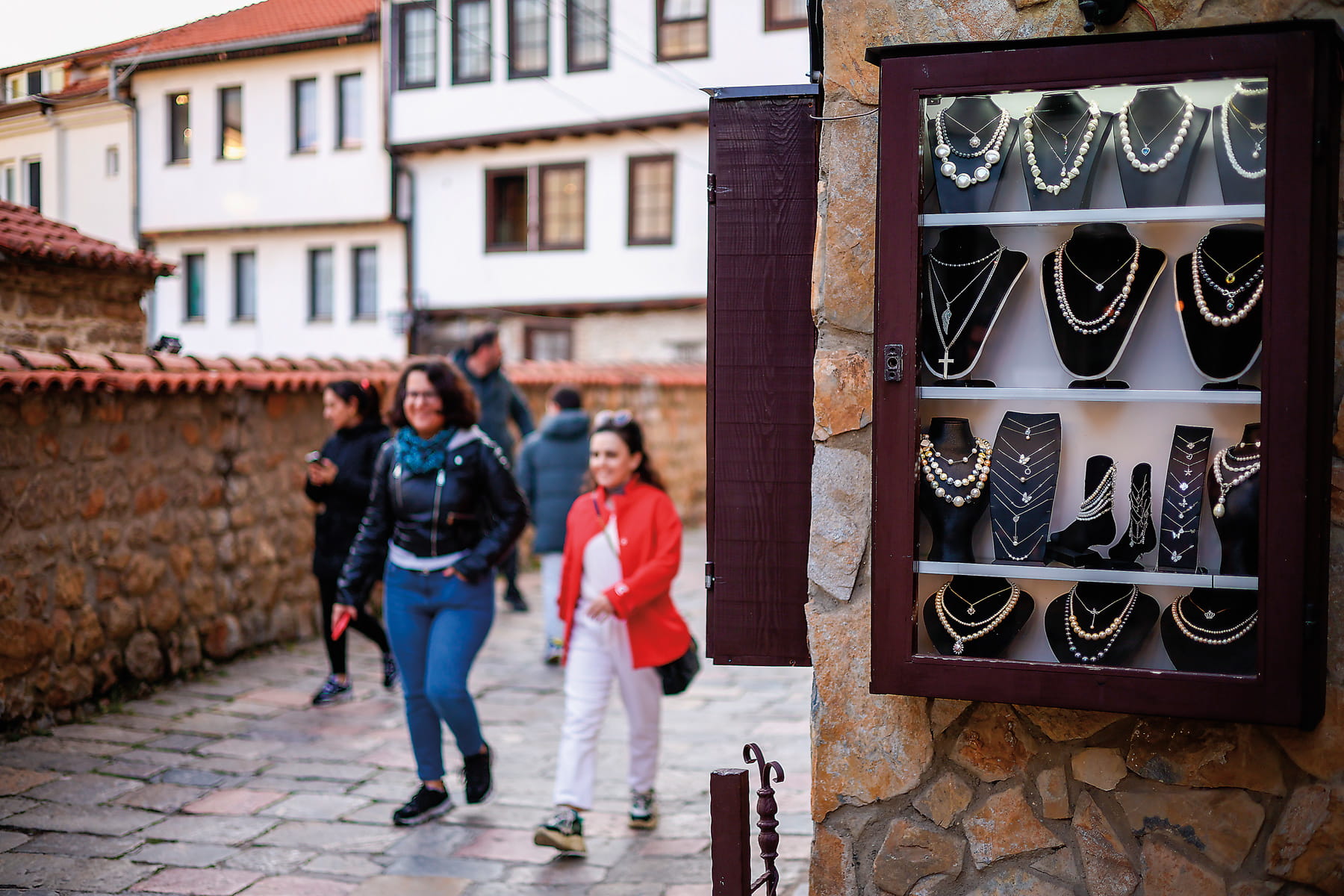
A store window displays Ohrid pearls for sale in the tourist town.Without a broader sharing of how they are made, the number of Ohrid pearls will remain limited.
While mass production of plastic, glass or shell pearls might threaten traditional crafts, Talev says it is important that Ohrid pearls survive. "The production technology is completely different from other pearls—it is 100 percent handmade." He remains convinced that Ohrid pearlmaking will survive and flourish. Yet his words are grounded in a conviction that authenticity will always trump replication.
Subanovie's true origins and unresolved death are still a mystery. Like the secret of the Ohrid pearls, it will remain a source of endless speculation-and perhaps more inspiration for Kocevski's novels. In an age of conjecture, speculation and exposure, it seems unlikely that such secrets should persist. And yet they do. "I've had a productive life," Filev says, sitting back in his chair; a life that, like for Talev, was faithful to Subanovic's wishes that his secret remain.
About the Author

Armin Durgut
Armin Durgut is a freelance photojournalist and a documentary photographer. He is a regular contributor to Associated Press news agency and other publications. His book and an exhibition, “Mrtvare,” poignantly documents the footwear of the Srebrenica genocide victims, and his work often highlights significant historical and social issues.
Ian Bancroft
Ian Bancroft is a writer and former diplomat based in the former Yugoslavia. He is the author of a novel, Luka, and a work of nonfiction, Dragon’s Teeth: Tales From North Kosovo.
You may also be interested in...
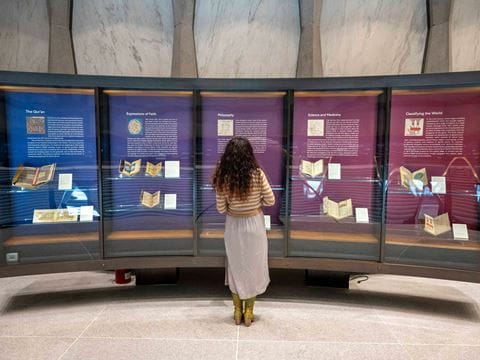
Mundane to Magnificent: Yale Manuscript Exhibition Illuminates Muslim Knowledge
Arts
Manuscript exhibition reveals handwritten treasures spanning centuries and nations, in graying script and glorious technicolor, on ancient papyrus and gold-coated paper.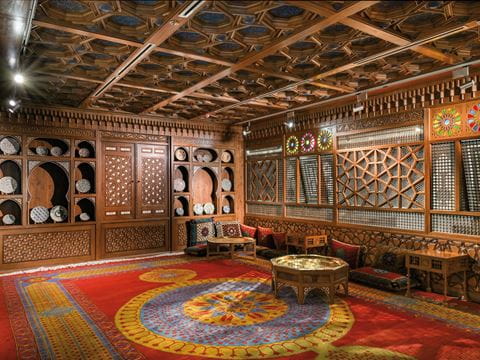
Handmade, Ever Relevant: Ithra Show Honors Timeless Craftsmanship
Arts
“In Praise of the Artisan,” an exhibition at Ithra in Dhahran, Saudi Arabia, aims to showcase Islamic arts-and-crafts heritage and inspire the next generation to keep traditions alive.
Spotlight on Photography: Finding Frozen Fun in Kyrgyzstan
Arts
Culture
In the winter of 2020, Lake Ara-Köl in Kyrgyzstan was becoming more and more popular.